STARING WITH EQUALITY
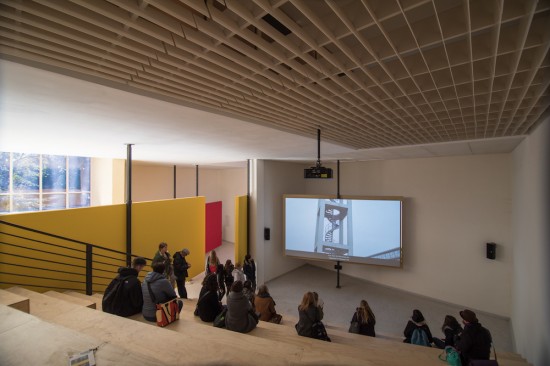
Cinema Olanda Film (2017), digital projection, 17 min, installation view in the Dutch Pavilion at the 57th Venice Biennale, 2017. Photo Giacomo Frison. All images: © Wendelien van Oldenborgh, courtesy the artist and Wilfried Lentz Rotterdam.
Based in Rotterdam, Wendelien van Oldenborgh is known for her multimedia installations investigating the intertwined legacies of colonialism, capitalism and political activism in contexts ranging from Indonesia and Brazil to the Netherlands itself. She often collaborates with her subjects to develop scripts for filming and then has the subjects comment on the filming process and material, as in Instruction (2009), for which she asked cadets from the Royal Netherlands Military Academy to read a series of primary texts related to the Dutch military intervention into Indonesia after World War II. Having exhibited at international exhibitions ranging from the São Paulo, Moscow and Kochi-Muziris biennials to the Aichi Triennale 2016, where she showed her film From Left to Night (2015), Van Oldenborgh had her biggest stage yet in 2017 when she was selected to represent the Netherlands at the 57th Venice Biennale. Entitled “Cinema Olanda,” her project for the Dutch Pavilion presented new and recent works in a site-specific installation, with the titular Cinema Olanda Film (2017) linking together the biography of the Suriname-born radical and founding member of the Communist Party of America, Otto Huiswoud, with the phenomenon of the immigrant-driven Indo-rock music that emerged in the Netherlands after Indonesian independence, and Gerrit Rietveld’s design for the architecture of the Dutch Pavilion to question prevailing notions of “Dutchness.”
Van Oldenborgh visited Japan in late 2017 to participate in “MOT Satellite 2017 Fall – Connecting Scapes,” organized at various locations by the Museum of Contemporary Art Tokyo. Her work was displayed at the Arts and Science Lab. at Tokyo University of the Arts Ueno Campus, where she also held a screening and talk and led a workshop for students and young artists. ART iT met with Van Oldenborgh during her stay to discuss her practice in greater detail.
“MOT Satellite 2017 Fall – Connecting Scapes” was held from October 7 to November 12, 2017.
I.

Still from Cinema Olanda Film (2017).
ART iT: As I was researching your work I was reminded of the Agitprop or Proletarian art from the 1920s and ’30s here in Japan and elsewhere, in which works of art depicting workers striking or organizing were not about representation or documentation so much as they were meant to provide viewers with tools they could apply to their own situations. Similarly, I think your approach of making films based on workshop-type situations in which the participants both construct and analyze the films as part of the production process encourages viewers to recognize their own agency with regard to representational media as well. Do you see any connection between this legacy and your practice?
WvO: No. I’ve always felt that Agitprop had a very clear message and political stance that it wanted to put across, whereas I try to make works that are open. Certainly, as you say, the process actively involves the participants in the production, and I hope that it also allows for viewers to take a certain place in it as well. But one of my aims is always to make room for the possibility of having multiple voices, or polyphony. I understand polyphony as the capacity to create or produce with difference, so that the difference remains as difference instead of being united under a single voice. I would like for difference to exist and be productive in social situations. That is the aim, which is not the same as saying, “This is the right message and this is what you should believe” – that’s exactly what I don’t want to do.
ART iT: But even though the people you work with are generally not professional actors, they become representations once they enter the world of film and media. What do they represent?
WvO: I try to work against representation in my polyphonic approach. The idea is to show the subjectivities of the people who appear in the works as being multiple, whereas representation reduces those subjectivities to a single image of a certain type or thing. I think the film From Left to Night (2015) is a good example of this. One of the central figures in the film, Dean, uses many different voices in the same piece: sometimes he speaks in a dramatic voice where he almost becomes the actor of his own life, at other times he chats with his friend, and then he raps in the studio. We can see here how somebody isn’t just the one thing you imagine him to be. He’s not just a hip-hopper, he’s also a shy, thoughtful guy who has had certain experiences in his life, and now he’s responding to someone else from a different background in a particular way. I think it’s important that he isn’t reduced to a form that could then be “representational.” The problem is of course that film is representation – but I am trying to undo the singularity of that representation.
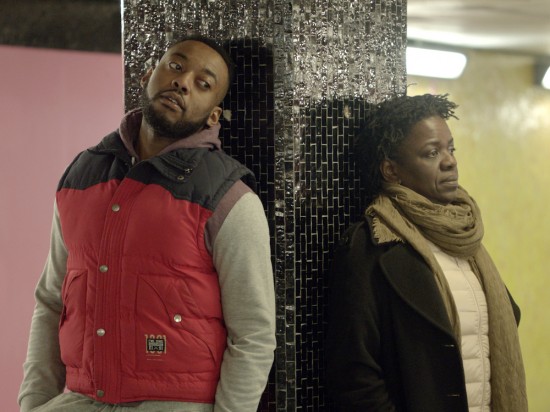
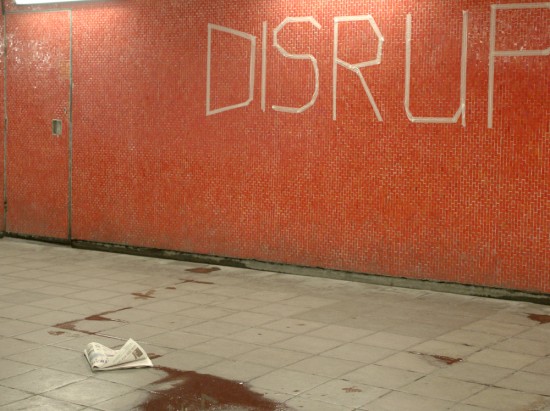
Both: From Left to Night (2015), HD video, 32 min.
ART iT: There’s another scene in From Left to Night in which one of the participants, the academic and activist Denise Ferreira da Silva, describes how multiculturalism was coopted by the mainstream after emerging as an influential movement in the 1980s.
WvO: Denise is an amazing woman who was directly involved in the activism of the 1980s she mentions. She refers to it as a representational movement because the people involved in multiculturalism were focusing on ideas of origins and how to express those origins and be recognized in society, but she feels it failed. So now she’s looking through her own work, which is writing and thinking, to find other ways of doing politics. We came together because I was also searching for a new approach to the political. Denise does it through her writing and academic research, which is pretty dense, theoretical stuff; I try to do it through filmmaking – which is a little less theoretical – but also by expressing the idea that things are not so reducible to identity politics as we currently know it. But how to achieve that is always a question. And indeed I try to do it by setting up situations where people have the possibility to explore in front of the camera and see what happens, and how deep it goes or what kind of language it becomes depends on the people themselves.
ART iT: That’s actually where I felt this echo of Proletarian Art: the people watching the films can see that they can also gather together to explore their own subjectivities. In other words, the process you depict is something they could imitate.
WvO: You mean it would be reproducible outside the film?
ART iT: Yes. And it’s not like everyone in the film is an “authority figure.” You have in the same film a highly accomplished academic next to a struggling musician.
WvO: Yes, I like those combinations. It’s important for me to show that there are these different types of knowledge available to us. It’s not limited to academic knowledge or political, already-described knowledge, but also extends to each person’s own intentions and languages, which can take many forms. That’s why I try to include a wide array of types of being and speaking – or being on camera as well.
I also explored this in the film Bete & Deise (2012). I was examining how these two women could be political in such different ways. On the one hand, Bete Mendes is a former actress and activist and politician who actually took part in the representational system of politics in Brazil, whereas Deise Tigrona, the younger singer, does not and never would call herself a political agentian. Given her experience in representational politics, and having achieved what she did in her career, Bete believes that politics works through representation, and of course it does to an extent. On the other hand, Deise is a woman whose body and being, which she expresses in public through her singing, is itself a kind of political activity.
Somewhat naïvely perhaps, I thought it would be interesting to bring those two modes of speech together to sound off to each other, in order to see whether it could produce another kind of politics. But what happened was actually almost painful to watch, as the distance between the two characters gradually became more and more apparent over the course of the filming. The older lady who was so committed to a certain politics could not actually relate to the object of her politics – even when it was standing before her. Bete says that she is part of a movement concerned with those who are disadvantaged, and she isn’t even able to have a conversation with someone from the group she imagines she is benevolently looking after. She doesn’t recognize that the person standing before her has her own knowledge that could be worth listening to or sharing. This is exactly where the problem arises with such politics. But in the completed film, I found it very satisfying – and I hope viewers do, too – to see so palpably and visibly the failures of that politics.
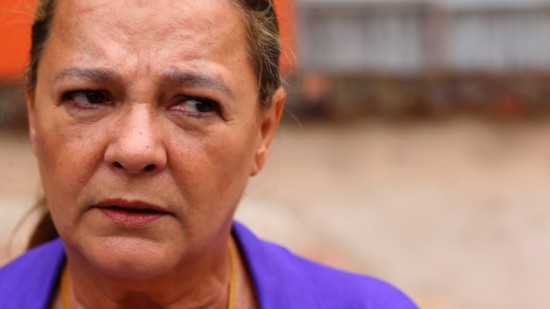
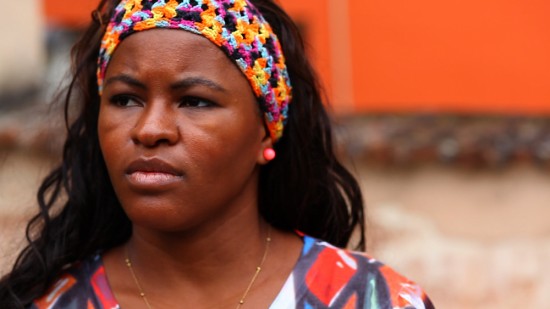
Both: Bete & Deise (2012), HD video, 41 min.
ART iT: The thing about multiculturalism is that either it was only ever symbolic, and never actually had an effect on society, or rather the reverse, that it wasn’t symbolic enough, and didn’t do enough to change our symbolic conventions.
WvO: In the Netherlands – and in England too – it was an issue of the policy making of the time, whereby the policy of multiculturalism actually reinforced the lines of difference. For example, in the Netherlands the subsidies for each different group ultimately had the effect of segregating the groups from each other. In making the work about activism in the Netherlands in the 1970s, Prologue: Squat /Anti-Squat (2016), I found that there was a lot of solidarity among different groups at the time. For example, all the non-white women would band together to strengthen their position in the women’s movement – because there was racial discrimination even there. But now all the groups are very separate, so you have Moroccan women or Surinamese women acting on their own. That stems from a system that subsidizes cultural activities or community centers for each particular group only – and now all the subsidies have been taken away, so it’s an even bigger mess. This is one example of how multiculturalism no longer functions as politics. And then, as you say, on the other hand, it’s absolutely true that we need to go deeper into the symbolic sphere as well. There is a phenomenon of very strong and open anti-black racism emerging in the Netherlands now, on top of which there are also people who deny that there is any racism at all, so we are really fighting over the Dutch imaginary, and ideas about what it means to be Dutch.
These were all issues I tried to address in the Dutch Pavilion in Venice, where Prologue: Squat/ Anti-Squat was on view. For example, squatting is a very important part of “Dutchness,” because it is part of an open society, and it has had a huge impact on the image of Amsterdam as a city. But the discourse on squatting never included squatting by black people, even though squatting is already considered alternative to the mainstream. It says a lot to me that even in the case of squatting the discourse could not include what was not white.
ART iT: There’s an alterity even within the alterity.
WvO: Totally. And it was very visible in the squatting scene. That wasn’t necessarily the reason why I made the work – I was just curious to learn more about this huge squat that took place in the 1970s – but the more I read about it and talked with people, the more I found it incomprehensible that the issue of race had not been written into the history of squatting in the Netherlands.
I | II
Wendelien van Oldenborgh: Staring with Equality
